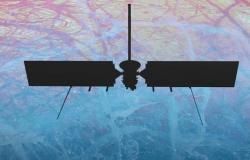Despite the recent postponement of the premieres Artemis crewed missions, NASA’s lunar program continues apace. The US agency has in fact announced that it has selected i first scientific instruments which will be carried out on the lunar surface by Artemis 3 astronauts.
These instruments, destined for the lunar South Pole, will collect data in line with the main scientific objectives of the Artemis program: understanding the processes that regulate the lunar environment, investigating the characteristics of lunar resources and evaluating the sustainability of a long-term human presence on the Moon. But here’s what we know at the moment about the scientific instruments selected by NASA for Artemis 3.
Lunar Environment Monitoring Station (Lems)
Literally, ‘lunar environmental monitoring station’. It is a compact and self-contained seismometric suite designed to carry out a continuous and long-term monitoring of the lunar territory, particularly of ground movement due to earthquakes in the southern polar region of the Moon. The Lems instrument will analyze the structure of the lunar crust and mantle, adding valuable information to current models of lunar formation and evolution. In NASA’s plans, this instrument is intended to operate on the lunar surface for three months to two years, and could become a key station in a future global lunar geophysical network.
Lunar Effects on Agricultural Flora (Leaf)
The acronym means ‘leaf’, and this instrument aims to study the effects of the lunar environment onspace farming. It will be the first experiment to observe photosynthesis, growth and systemic stress responses of plants under space radiation conditions. The data collected by Leaf will help scientists better understand the feasibility of cultivation projects on the Moon forastronaut nutrition on our satellite and during long duration missions.
Lunar Dielectric Analyzer (Lda)
This ‘lunar dielectric analyzer’ will measure the capacitance of the regolith to propagate an electric field, a fundamental parameter for the search for lunar volatiles, in particular ice. Lda will collect essential information on the structure of the lunar subsurface, hunting for any frost formations or ice deposits. The instrument is also supported by the Japanese space agency Jaxa.
«These three instruments were chosen to begin scientific investigations that will concern key scientific objectives from the Moon to Mars, comments the deputy administrator of NASA Pam Melroy. – Artemis will mark a bold new era of exploration, in which human presence will amplify scientific discoveries.”
All three payloads have been selected by the US agency to be further developed in the coming months. The instruments will fly with the Artemis 3 mission, which is currently scheduled to launch under the agency’s new roadmap. September 2026.
Meanwhile, the Italian contribution to the Artemis program. The most recent is designing the future Lunar Robotic Mission Simulation and Control Centerunder development at the headquarters Altec of Turin with the support ofItalian Space Agency.
Video: Italy’s main contributions to the Artemis programme. Credits: AsiTv
Top image: Artist’s impression of an astronaut installing a scientific instrument on the lunar surface. Credit: NASA





